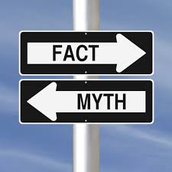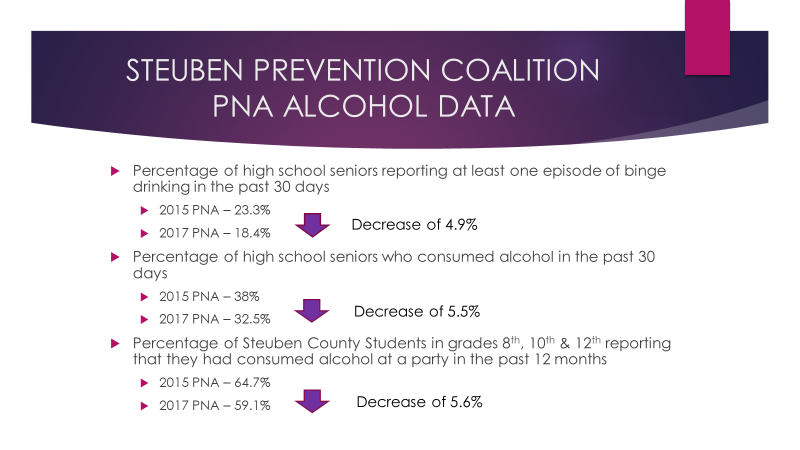UNDERAGE DRINKING PREVENTION RESOURCES
Substance Abuse and Mental Health Services Administration (SAMHSA)
www.learnaboutsam.org
www.samhsa.gov
www.toosmarttostart.samhsa.gov
National Institute on Drug Abuse (NIDA)
www.drugabuse.gov
www.nih.gov
Office of Alcoholism and Substance Abuse (OASAS)
www.oasas.ny.gov
Community Anti-Drug Coalitions of America (CADCA)
www.cadca.org
Talk 2 Prevent (NYS)
www.talk2prevent.ny.gov
National Institute on Alcohol Abuse and Alcoholism (NIAA)
www.niaaa.gov
National Institute of Mental Health (NIMH)
www.nimh.nih.org
Drug Enforcement Administration (DEA)
www.dea.gov
Drug Free World
www.drugfreeworld.org
Operation Parent
www.operationparent.org
University of Illinois at Chicago
PUBLIC HEALTH SURVEILLANCE AND ALCOHOL-RELATED INJURIES
Considered a crisis situation in the United States, excessive drinking and binge drinking are problems that require serious attention. The detrimental effect it has on public safety is more than worthy of all the effort necessary to not only reduce it but eradicate it. More significant are the innocent lives that are impacted. This devastating impact ranges from financial cost, physical injuries and rehabilitation, and many times, fatalities. To learn more, checkout the infographic below created by University of Illinois at Chicago’s Online Master of Science in Health Informatics degree program.
http://healthinformatics.uic.edu/resources/infographics/public-health-surveillance-and-alcohol-related-injuries/
www.learnaboutsam.org
www.samhsa.gov
www.toosmarttostart.samhsa.gov
National Institute on Drug Abuse (NIDA)
www.drugabuse.gov
www.nih.gov
Office of Alcoholism and Substance Abuse (OASAS)
www.oasas.ny.gov
Community Anti-Drug Coalitions of America (CADCA)
www.cadca.org
Talk 2 Prevent (NYS)
www.talk2prevent.ny.gov
National Institute on Alcohol Abuse and Alcoholism (NIAA)
www.niaaa.gov
National Institute of Mental Health (NIMH)
www.nimh.nih.org
Drug Enforcement Administration (DEA)
www.dea.gov
Drug Free World
www.drugfreeworld.org
Operation Parent
www.operationparent.org
University of Illinois at Chicago
PUBLIC HEALTH SURVEILLANCE AND ALCOHOL-RELATED INJURIES
Considered a crisis situation in the United States, excessive drinking and binge drinking are problems that require serious attention. The detrimental effect it has on public safety is more than worthy of all the effort necessary to not only reduce it but eradicate it. More significant are the innocent lives that are impacted. This devastating impact ranges from financial cost, physical injuries and rehabilitation, and many times, fatalities. To learn more, checkout the infographic below created by University of Illinois at Chicago’s Online Master of Science in Health Informatics degree program.
http://healthinformatics.uic.edu/resources/infographics/public-health-surveillance-and-alcohol-related-injuries/
2019 PNA Alcohol outcomes
2017 Compliance check project

The Steuben County Sheriff's Office in partnership and collaboration with the Coalition and multiple local and state Law Enforcement Agencies performed a county-wide Alcohol Sales Compliance Check. The following establishments successfully passed the sales compliance check:
Arrow Mart - Bath
Quicklee's - Bath
Hatfields Cash & Carry - Bath
Kwik Fill Rte 54 - Bath
Harash Stop & Shop - Bath
One Stop Mini Mart - Bath
Kwik Fill Rte 415 - Bath
Lakeview Gulf - Bath
Triple K Beverage - Bath
Tops - Corning
Dandy Mini Mart #52 - Corning
Dandy Mini Mart #64 - Corning
Fastrac - Corning
Walgreens - Corning
Wegmans - Corning
Pilot - Bath
Arrow Mart - Savona
Flying H - Savona
Michael Johns Mini Market - Hornell
Byrne Dairy - Corning
7 Eleven - Arkport
Beartown Beverage - Painted Post
Sunoco - Corning
Citgo - Corning
A & A Foodmart - Painted Post
Rite Aide - Corning
KwikFill - North Hornell
KwikFill - Hornell
7 Eleven - Hornell
Adult Perception Surveys
The Steuben Prevention Coalition conducts an Adult Perception Survey to learn more about how
Steuben County residents view underage drinking and drug use. The results of these surveys are used to steer the efforts of the Steuben Prevention Coalition and provide
data for future funding opportunities.
|
| ||||
|
| ||||
| adult_perception_survey_2012.doc |
There is no single reason why teenagers use drugs or alcohol. But here are some of the core issues and influences behind the behavior of teenage drug and alcohol use.
It’s important that you, as a parent, understand these reasons and talk to your kids about the dangers of drinking and using drugs.
It’s important that you, as a parent, understand these reasons and talk to your kids about the dangers of drinking and using drugs.
- Other People — Teenagers see lots of people consuming various substances. They see their parents and other adults drinking alcohol, smoking cigarettes and, sometimes, trying other substances. Also, a teenager’s social scene often revolves around drinking and smoking marijuana. Sometimes friends urge one another to have a drink or smoke pot, but it’s just as common for teens to start trying a substance because it’s readily available and they see all their friends enjoying it. In their minds, they see drug use as a part of the normal teenage experience.
- Popular Media — Forty-five percent of teens agree with the statement: “The music that teens listen to makes marijuana seem cool.” And 45 percent of teens agree with the statement “Movies and TV shows make drugs seem like an ok thing to do.” (PATS 2012) So be aware of the media that your son or daughter is consuming and talk to them about it.
- Escape and Self-Medication — When teens are unhappy and can’t find a healthy outlet for their frustration or a trusted confidant, they may turn to chemicals for solace. Depending on what substance they’re using, they may feel blissfully oblivious, wonderfully happy or energized and confident. The often-rough teenage years can take an emotional toll on children, sometimes even causing depression, so when teens are given a chance to take something to make them feel better, many can’t resist. For example, some teens abuse prescription medicine to manage stress or regulate their lives. Sometimes they abuse prescription stimulants (used to treat attention deficit hyperactivity disorder) to provide additional energy and the ability to focus when they’re studying or taking tests. Others are abusing prescription pain relievers and tranquilizers to cope with academic, social or emotional stress.
- Boredom — Teens who can’t tolerate being alone, have trouble keeping themselves occupied or crave excitement are prime candidates for substance use. Not only do alcohol and marijuana give them something to do, but those substances help fill the internal void they feel. Further, they provide a common ground for interacting with like-minded teens, a way to instantly bond with a group of kids.
- Rebellion — Different rebellious teens choose different substances to use based on their personalities. Alcohol is the drug of choice for the angry teenager because it frees him to behave aggressively. Methamphetamine, or meth, also encourages aggressive, violent behavior, and can be far more dangerous and potent than alcohol. Marijuana, on the other hand, often seems to reduce aggression and is more of an avoidance drug. Some teens abuse prescription medicine to party and get high. LSD and hallucinogens are also escape drugs, often used by young people who feel misunderstood and may long to escape to a more idealistic, kind world. Smoking cigarettes can be a form of rebellion to flaunt their independence and make their parents angry. The reasons for teenage drug-use are as complex as teenagers themselves.
- Instant Gratification — Drugs and alcohol work quickly. The initial effects feel really good. Teenagers turn to drug use because they see it as a short-term shortcut to happiness.
- Lack of Confidence — Many shy teenagers who lack confidence report that they’ll do things under the influence of alcohol or drugs that they might not otherwise. This is part of the appeal of drugs and alcohol even for relatively self-confident teens; you have the courage to dance if you’re a bad dancer, or sing at the top of your lungs even if you have a terrible voice, or kiss the girl you’re attracted to. And alcohol and other drugs tend not only to loosen your inhibitions but to alleviate social anxiety. Not only do you have something in common with the other people around you, but there’s the mentality that if you do anything or say anything stupid, everyone will just think you had too many drinks or smoked too much weed.
- Misinformation — Perhaps the most avoidable cause of substance use is inaccurate information about drugs and alcohol. Nearly every teenager has friends who claim to be experts on various recreational substances, and they’re happy to assure her that the risks are minimal. Educate your teenagers about drug use, so they get the real facts about the dangers of drug use.











